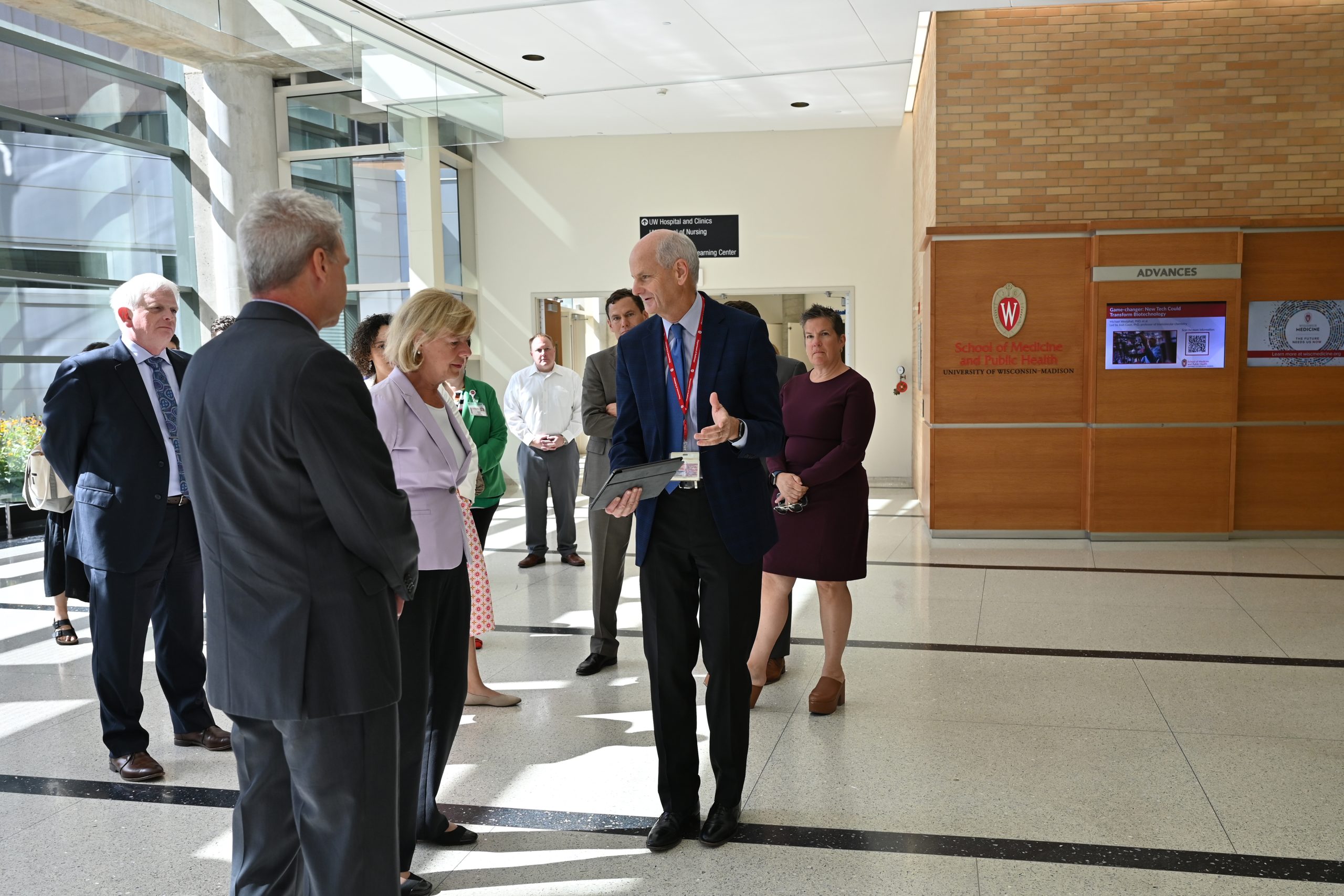Wisconsin Senator Tammy Baldwin visited the Wisconsin Institutes for Medical Research on the University of Wisconsin–Madison campus Wednesday, highlighting the university’s experience and expertise as a collaborative powerhouse in bioscience and technology.
“It’s great to be here at the Wisconsin Institutes for Medical Research and to see the groundbreaking innovations that are occurring here,” stated Senator Baldwin, adding that she appreciates “the partnerships that have been built between a public university research institution, and private sector health care industry leaders.”

The tour is part of an effort to highlight a new statewide biohealth consortium of 15 private and public partners, including UW–Madison.
Announced by the Wisconsin Economic Development Corporation (WEDC) earlier this month, the consortium’s educational institutions, biohealth companies, precision manufacturers, and investors will work together to develop and facilitate shared initiatives and to pursue a Regional Tech Hub designation for the state of Wisconsin. This designation, which is awarded by the federal Economic Development Administration, would give the state access to at least $50 million in federal funds under the CHIPS and Science Act of 2022.
WEDC Secretary and CEO Missy Hughes highlighted the multiplier effect of such a collaboration, noting, “Economic development is really about injecting resources into something that’s already happening. Where we have this organic opportunity arising because of our industry and our universities, we can knit together efforts to help entrepreneurs or to do more workforce training and to do more research.”
“I think what I’ve really seen today is the Wisconsin Idea coming to life, where we have government and university and industry all working together. It’s classic Wisconsin,” added Hughes.
Secretary Hughes accompanied Senator Baldwin on the tour, underlining the assets UW–Madison brings to the consortium’s efforts. Connected to UW School of Medicine and Public Health and UW Health’s University Hospital, the Wisconsin Institutes for Medical Research (WIMR) is a cutting-edge translational and interdisciplinary research facility that brings together human and technological resources in one location. The tour included the UW–Madison Cyclotron lab, Radiopharmaceutical Production Facility, WIMR PET Imaging Center, and the Photon Counting CT Scanner.

Throughout the visit, WIMR leadership and researchers highlighted industry collaborations and innovative UW–Madison advances in a variety of important medical fields.

As Senator Baldwin noted following the tour: “Personalized medicine and a new word to me— theranostics, which is sort of the combination of therapy and diagnostics—are huge opportunities to deal with some of the most challenging chronic and acute diseases that we experience, whether that’s cancer [or] Alzheimer’s. All of that could really be developed and scaled here in Wisconsin, and it would not just have helpful, healthy impacts here in the States, but globally. It could be a real game changer.”